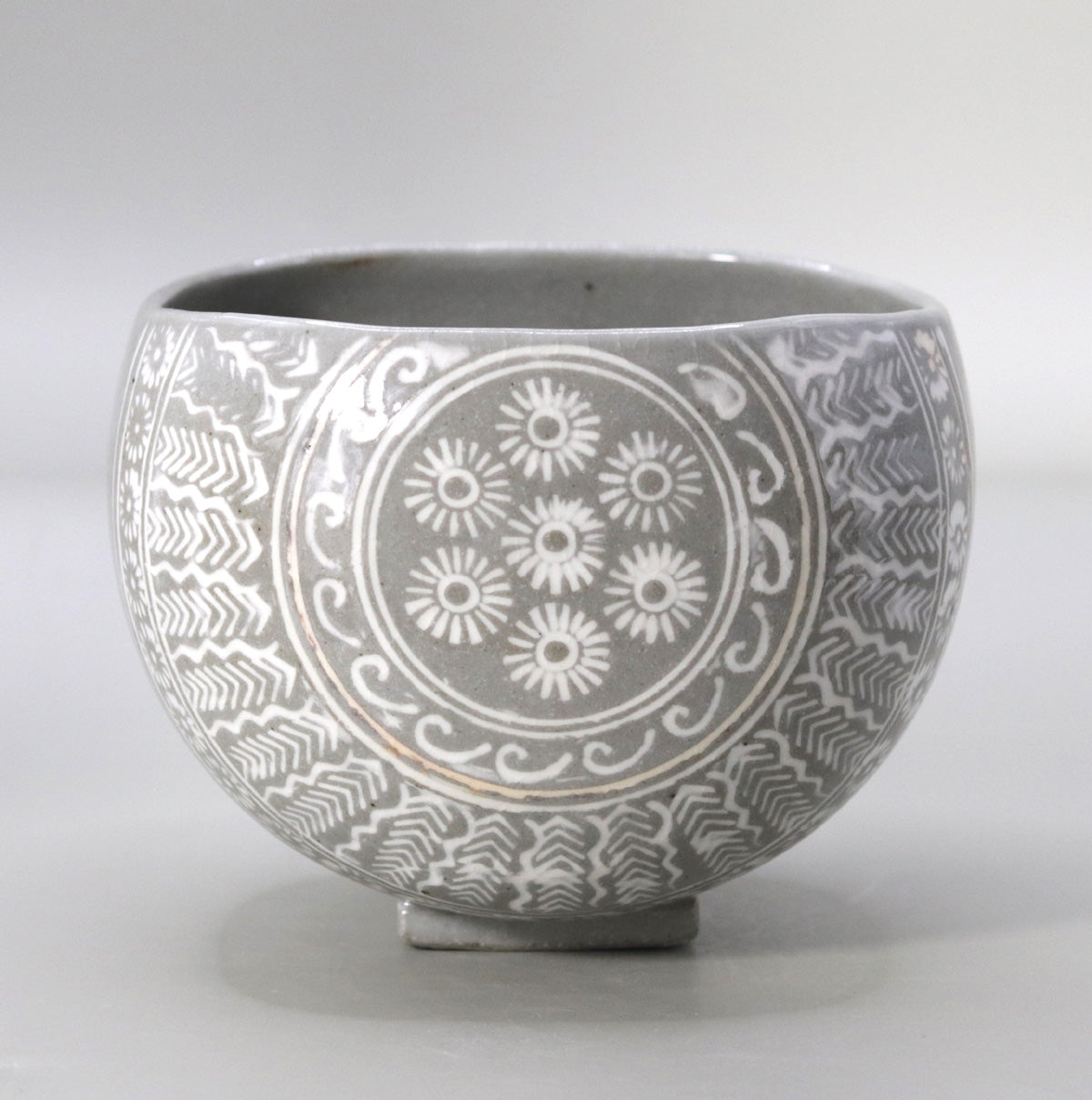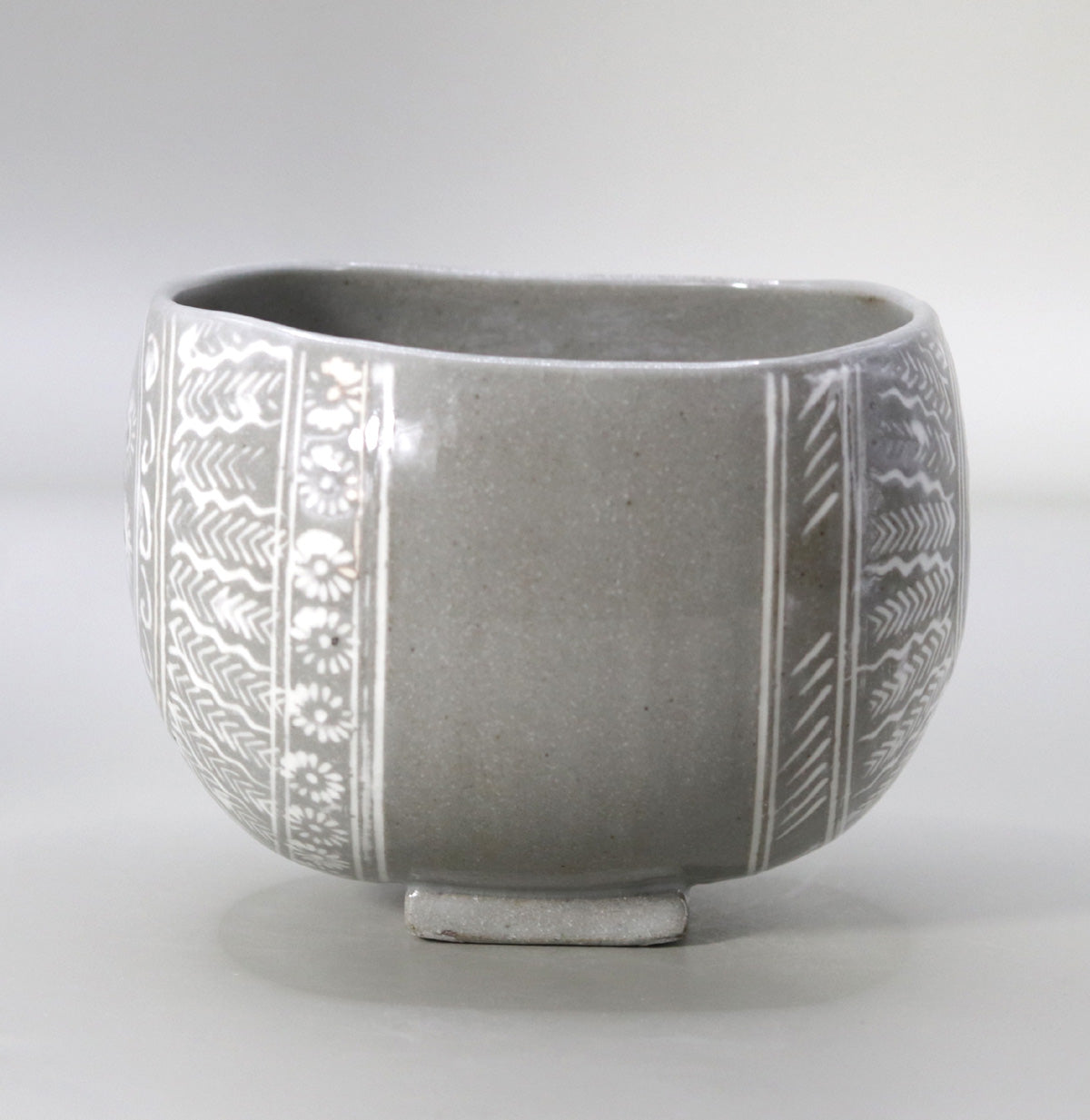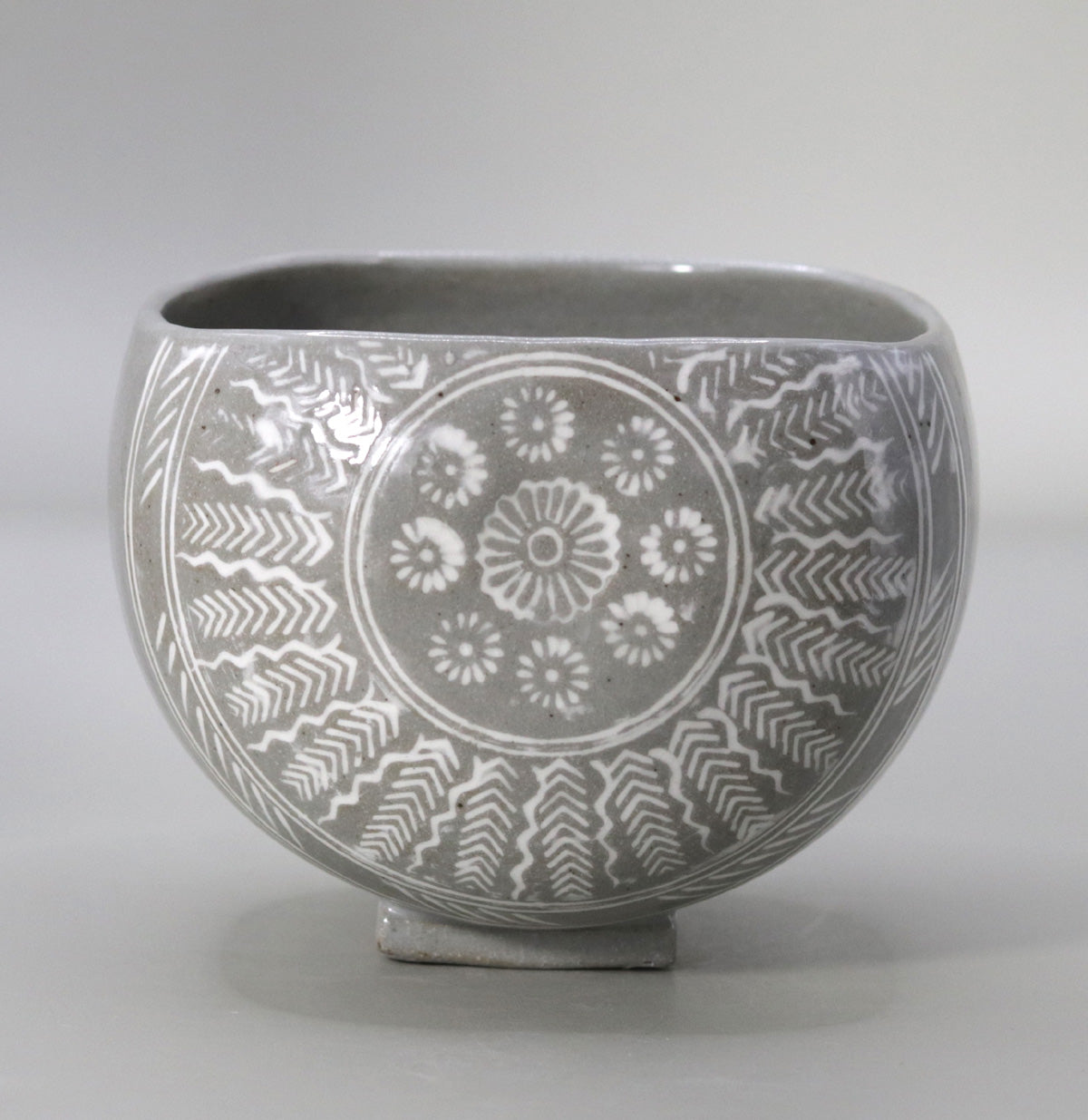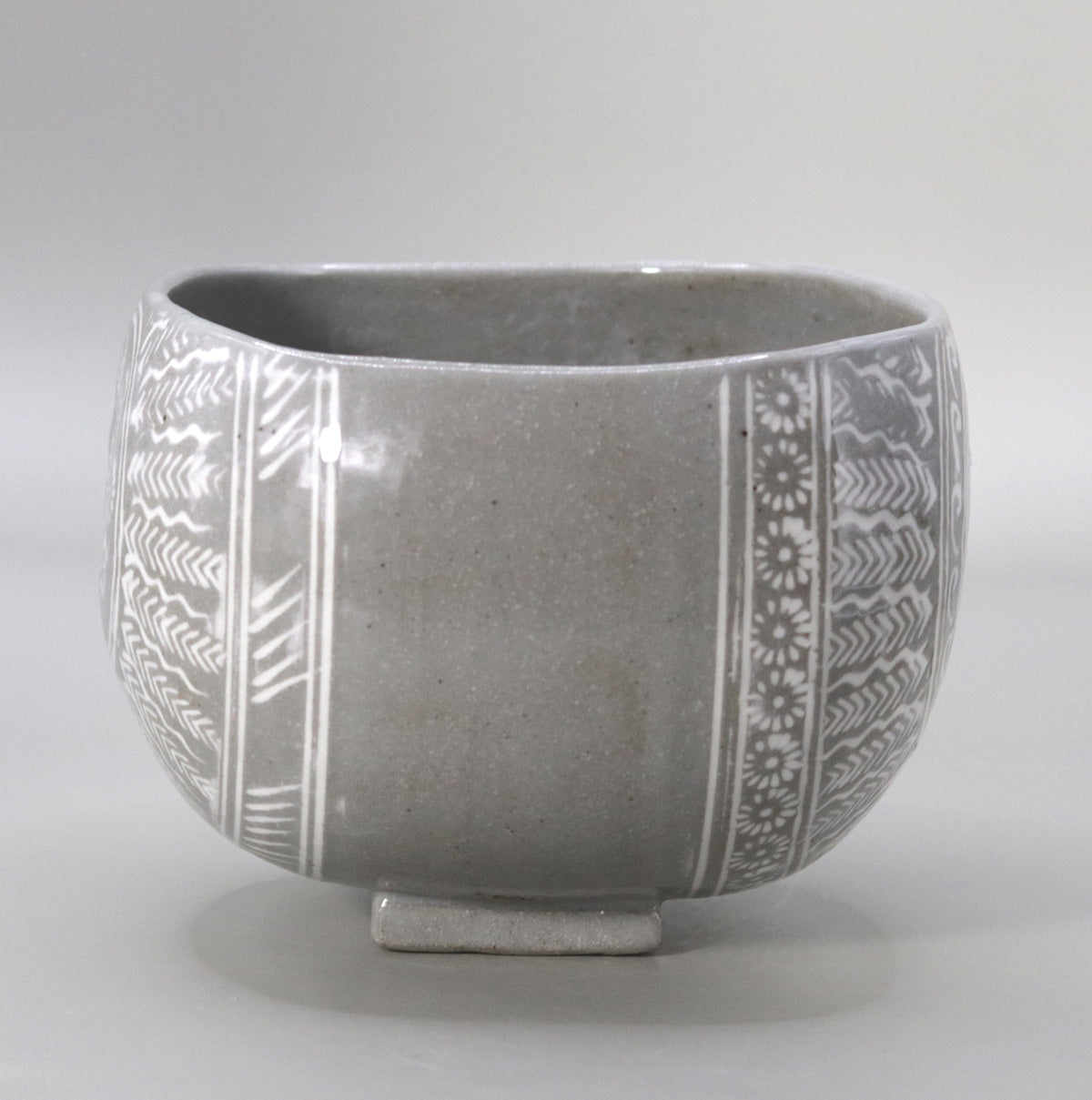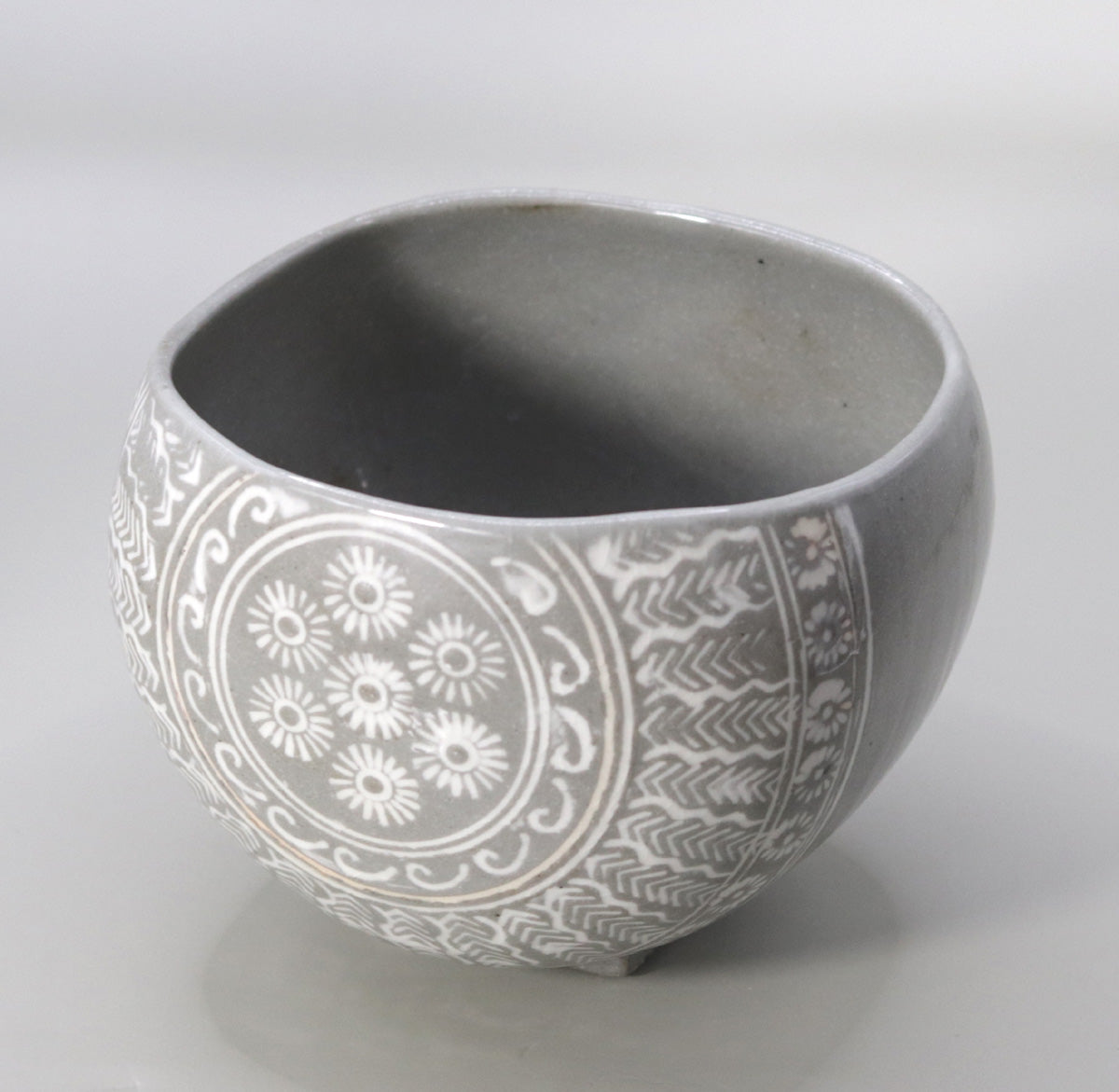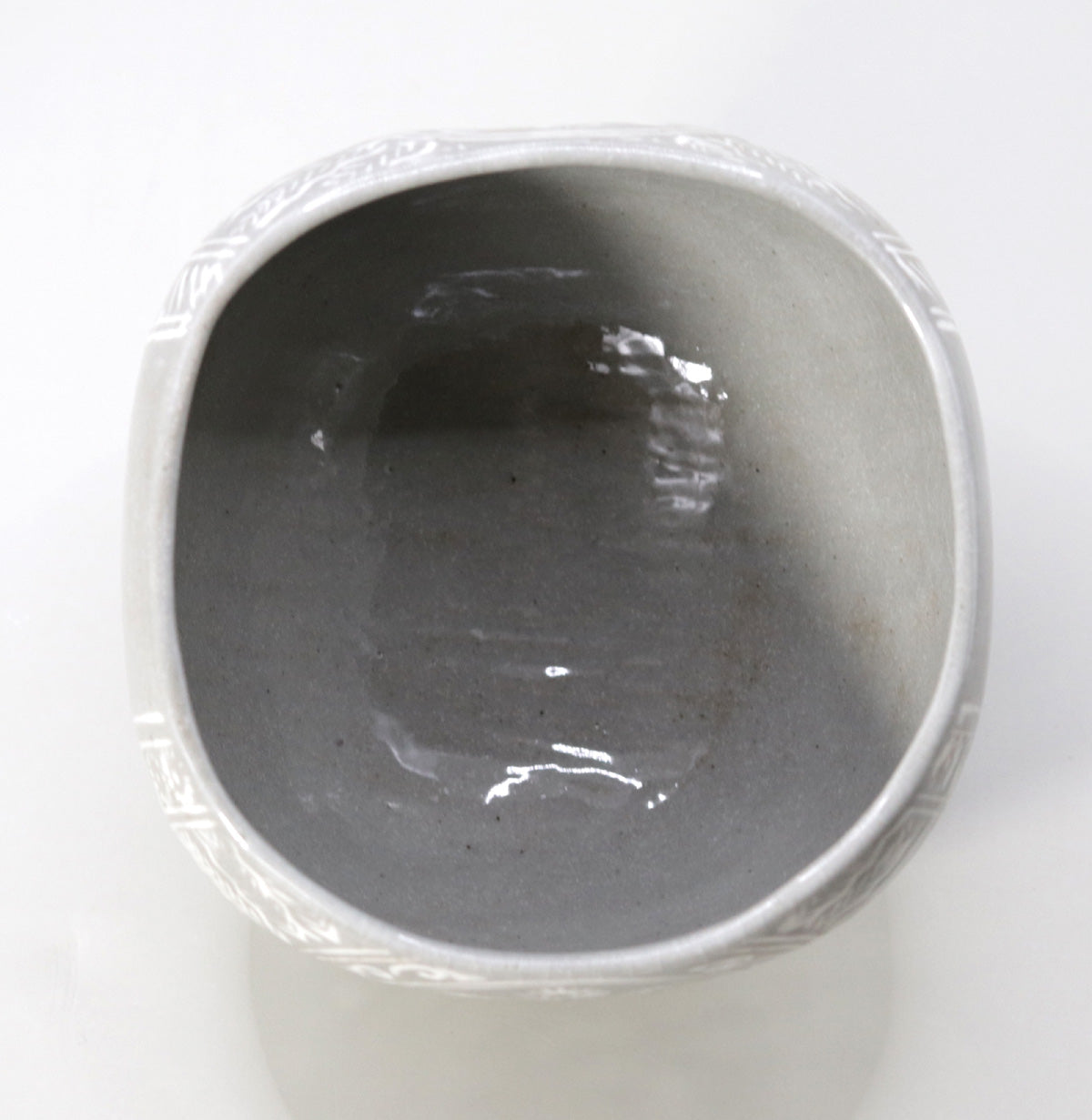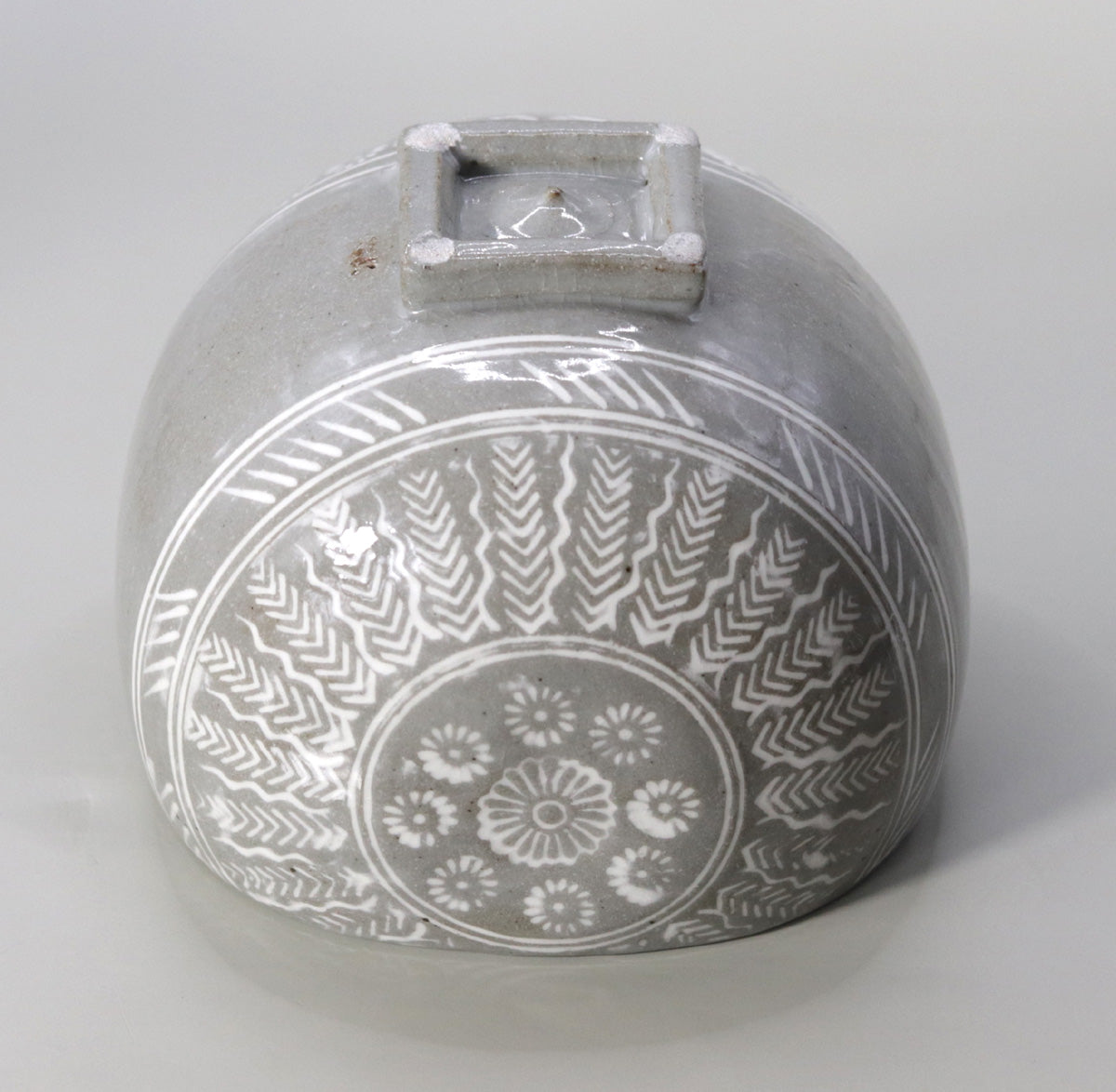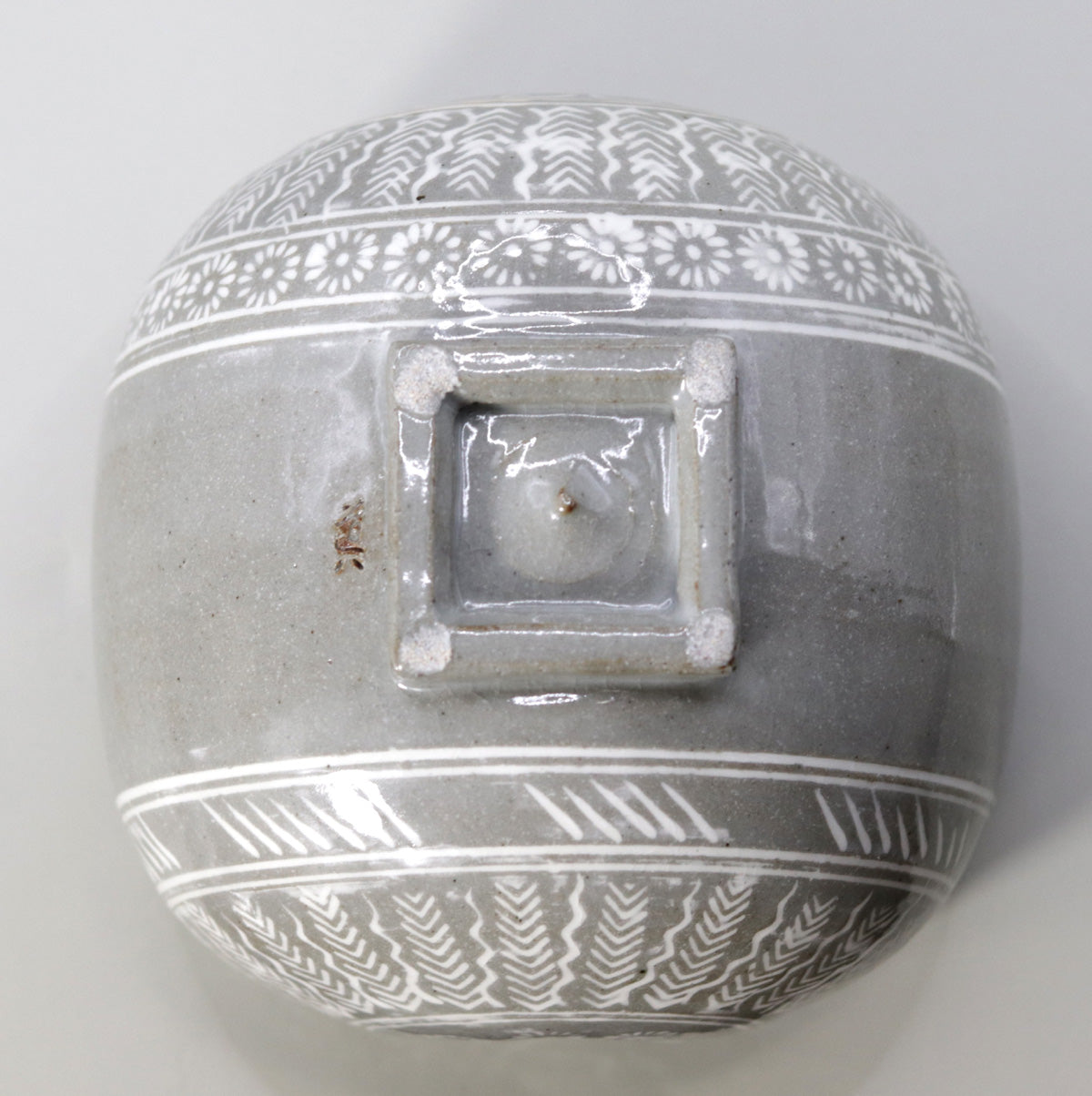Tea Bowl Shaped Mishima by Dohachi Takahashi
Tea Bowl Shaped Mishima by Dohachi Takahashi
Couldn't load pickup availability
Width: 12.2cm Height: 9.09cm
Tawara-shaped Mishima tea bowl - Takahashi Michihachi, 9th generation
This piece, with its intricate white mud inlay pattern emerging from the gray-blue glaze surface, is a masterpiece that recreates the "Mishimade" style, which originated from the Buncheong porcelain of the Joseon Dynasty of Korea, with the refined touch unique to Michihachi Takahashi. Below, we will introduce its appeal and the background of its design in detail from five perspectives.
1. Beauty of form - The shape of a rice bale creates a sense of stability and charm
The outer shape of this piece is plump and rounded, reminiscent of a straw rice sack, but the base is finished in a "tawara-gata" shape with corners on all four sides. The body is slightly high, providing a good grip when shaking the tea whisk, and the rim gently rolls inward to catch the matcha foam. The base is square and stable, and the gently rounded bottom (inside) allows the tea to naturally gather in the center, making it easier to use during the tea ceremony.
2. Glaze Tone - The Serenity of Gray-Blue and the Scenery of Crazing
The glaze that covers the entire piece has a gray-blue nuance, and the soft luster of the reduction firing gives it fine crazing. With repeated use, tea stains will penetrate the crazing, making the outline of the pattern stand out even more, giving it the appeal of being a "vessel that grows." The chipped glaze on the rim and the iron powder visible in the thin layer around the foot also add a touch of charm to the scenery, adding warmth to the cool glaze.
3. Design - Mishima inlay ring flower pattern and continuous arrow feather pattern
The front of the body features a ring of six petals within a circle surrounded by linked arabesque patterns, with a small flower in the center, creating a "Seven Days"-style composition. Continuous arrow feathers are arranged vertically around the periphery, creating a rhythm that intertwines ancient and modern styles. Inlay is a genuine technique in which the base is engraved or embossed, then white clay is rubbed in and the white space is scraped away to set the pattern. The white that sinks under the glaze gently emerges from the gray-blue glaze surface, creating a unique effect of depth depending on the angle of the light.
4. Techniques - Inheritance of Buncheong ware lineage and sophistication of Kyoto ware
Mishima-te originates from 15th-century Korean Buncheong ware, and copying became popular in Japan from the 16th century onwards. This piece is made using the traditional process of combining stamping and inlay after careful wheel-throwing , and finally applying ash glaze and firing in reduction. While Dohachi is famous for his Kyoto ware overglaze paintings, he is also well versed in works that make use of these earthenware and techniques, and while maintaining the rough texture unique to Mishima, he has finished the details with the neatness that is characteristic of Kyoto ware.
5. Historical and cultural background: Mishima's hobby lives on in the tea ceremony
Mishima tea bowls were loved by tea masters who respected the culture of the Song and Yi dynasties, and are said to have been highly valued by Takeno Jōō and Sen no Rikyu. The rice bag shape in particular is considered auspicious, evocative of the rice harvest, and has been chosen for the first tea ceremony of the New Year and tea ceremonies celebrating the harvest. This work revives the traditional design with a refined look that blends in with the space of modern tea ceremonies and galleries, bridging the gap between history and modernity.
The Takahashi Dohachi family has been known as a prestigious Kyoto ware color painting family since the late Edo period. The ninth generation master graduated from the Department of Clothing Design at Kyoto Bunkyo Junior College, majored in design, and then went on to the Department of Molding and Research at Kyoto Prefectural Ceramic Technical College, and further solidified his technical foundation at the Kyoto Industrial Research Institute.
In 1996, he began to study pottery under his father, Dohachi Yashiro, and began making pottery in earnest.
In 2012, he took on the name of the ninth Takahashi Dohachi.
His style, which combines the sense of form cultivated in clothing design with the traditional techniques of Kyoto ware, has breathed new life into the Dohachi family of pottery and displays a sophistication that stands out in modern tea ceremonies and gallery spaces.
This tea bowl, with its tranquility of the gray-blue glaze and the neat pattern of the white inlay, combines the familiarity and elegance that only a rice bag-shaped bowl can offer. When you hold it in your hand, the slight unevenness of the glaze surface and the unevenness of the inlay will pleasantly stimulate your fingertips, and you can enjoy the view of the color deepening into a craze with each tea you make. It can be used not only for tea ceremonies such as "Kuchikiri" in early spring and "Nagori" in autumn, but also for everyday practice, as the contrast between the gray-blue and white will vividly bring out the green of the matcha and tighten the atmosphere of the tea room. Please enjoy this bowl for many years to come, and appreciate the outstanding skill of Takahashi Michihachi and the elegance of Mishima's style.
Share
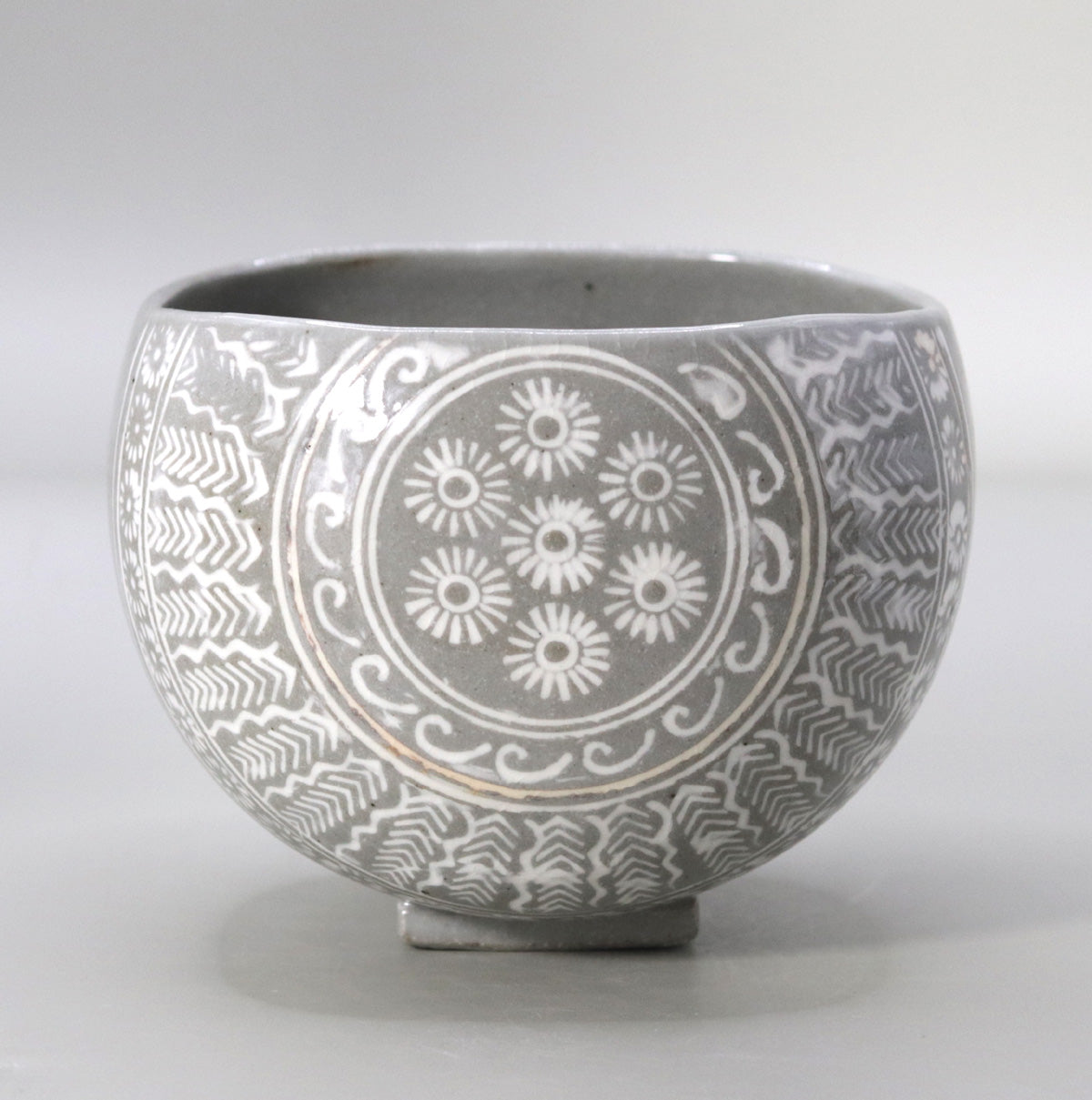
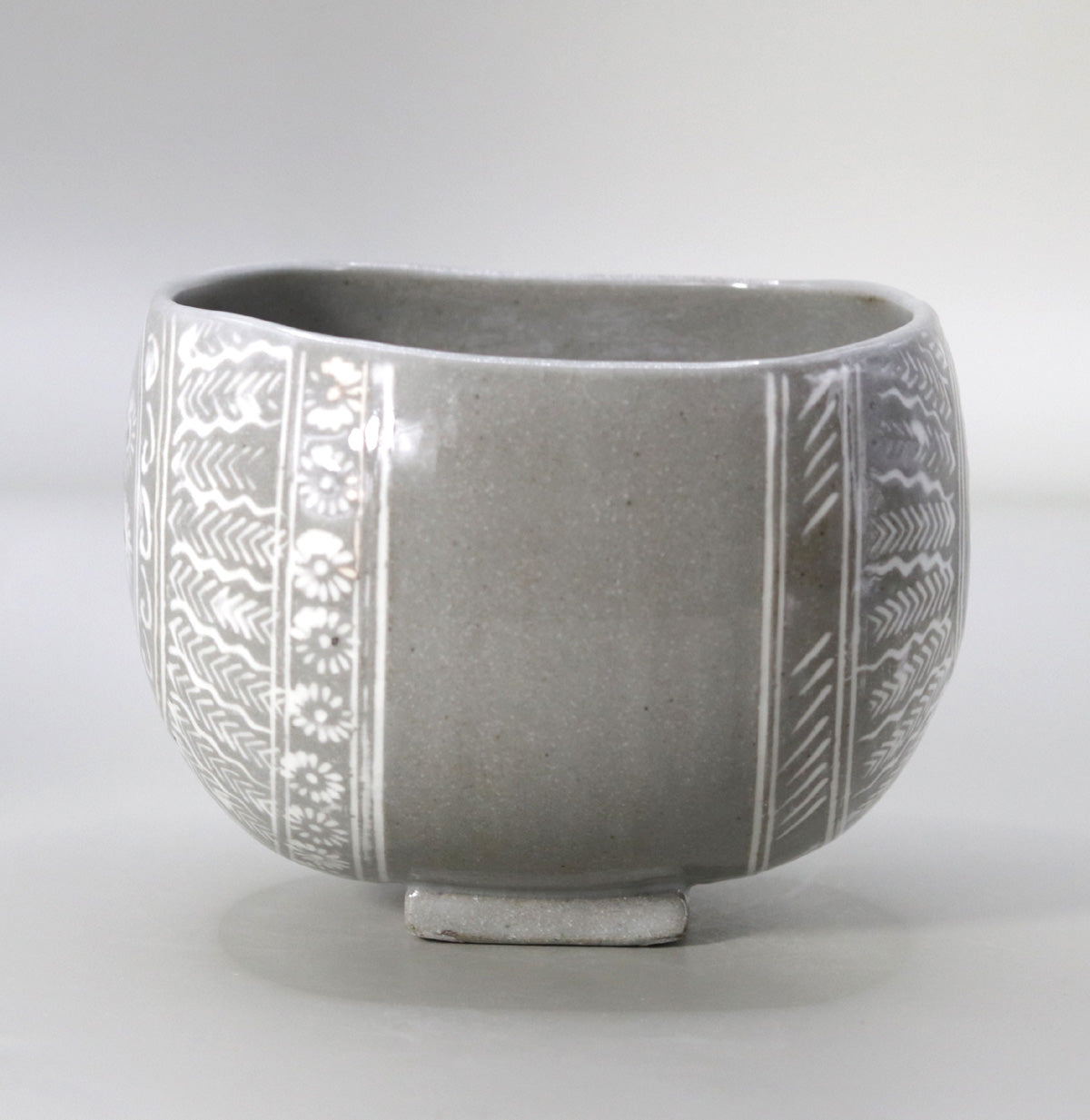


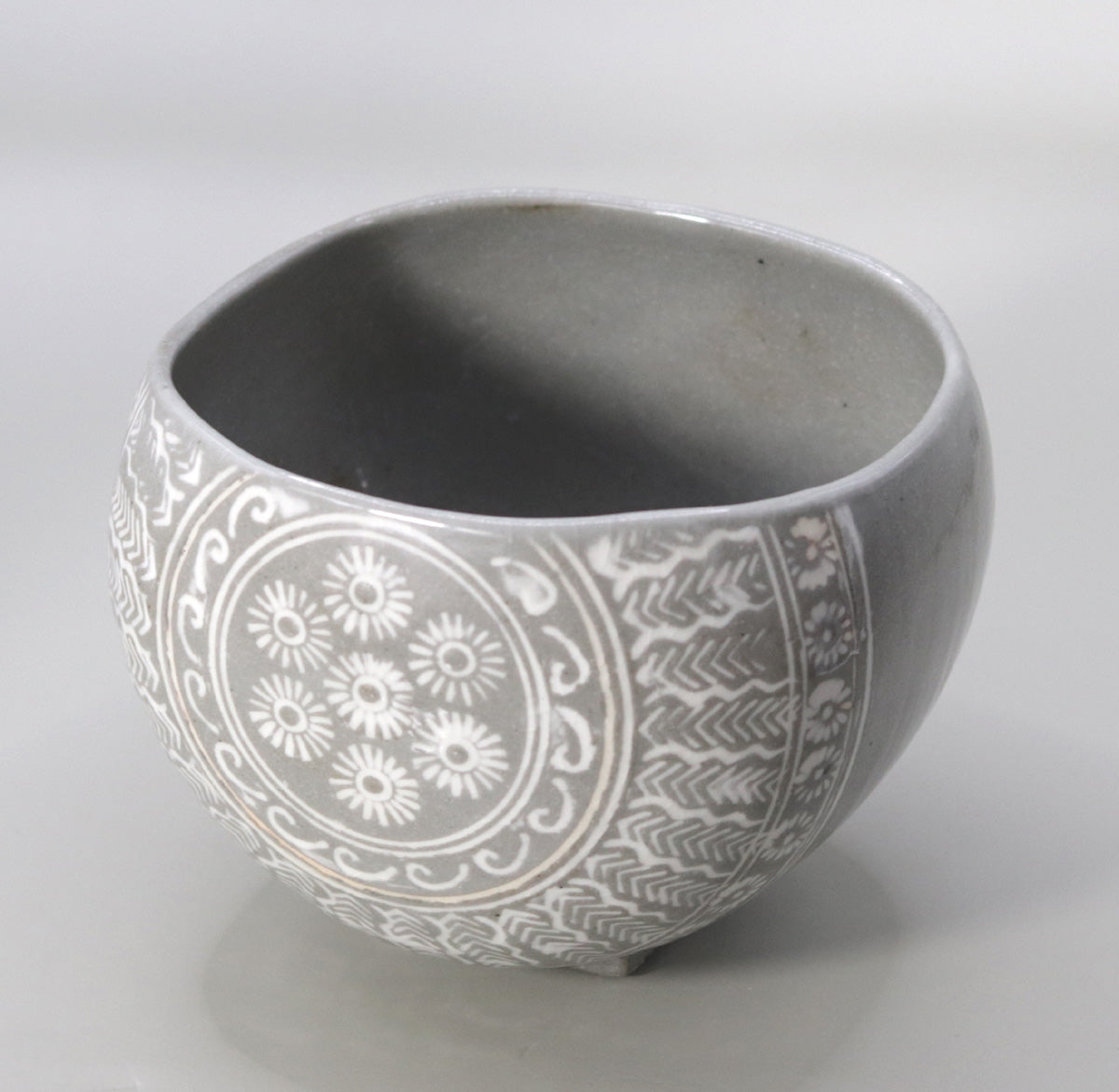



Multi-Column
-
[I will send it to you quickly and carefully]
We carefully package each product in a way that suits it best.
Also, delivery times vary depending on the piece (vessel, etc.).
Items that already come with a box will be shipped within 1-3 days of the order date.
For items that require a box to be made after your order, it will take approximately 30 days for production to be completed and then shipped.
In either case, once we have confirmed your order, we will contact you by email to inform you of the delivery date.
-
[Requests when purchasing pottery]
Even products that look the same may differ slightly in color, shape, size, etc.
The way the glaze is used, the power of the kiln, the firing method, the season, and the humidity also affect the appearance of the pottery.
Please understand the individuality of each piece of pottery and enjoy the unique warmth of handmade.

